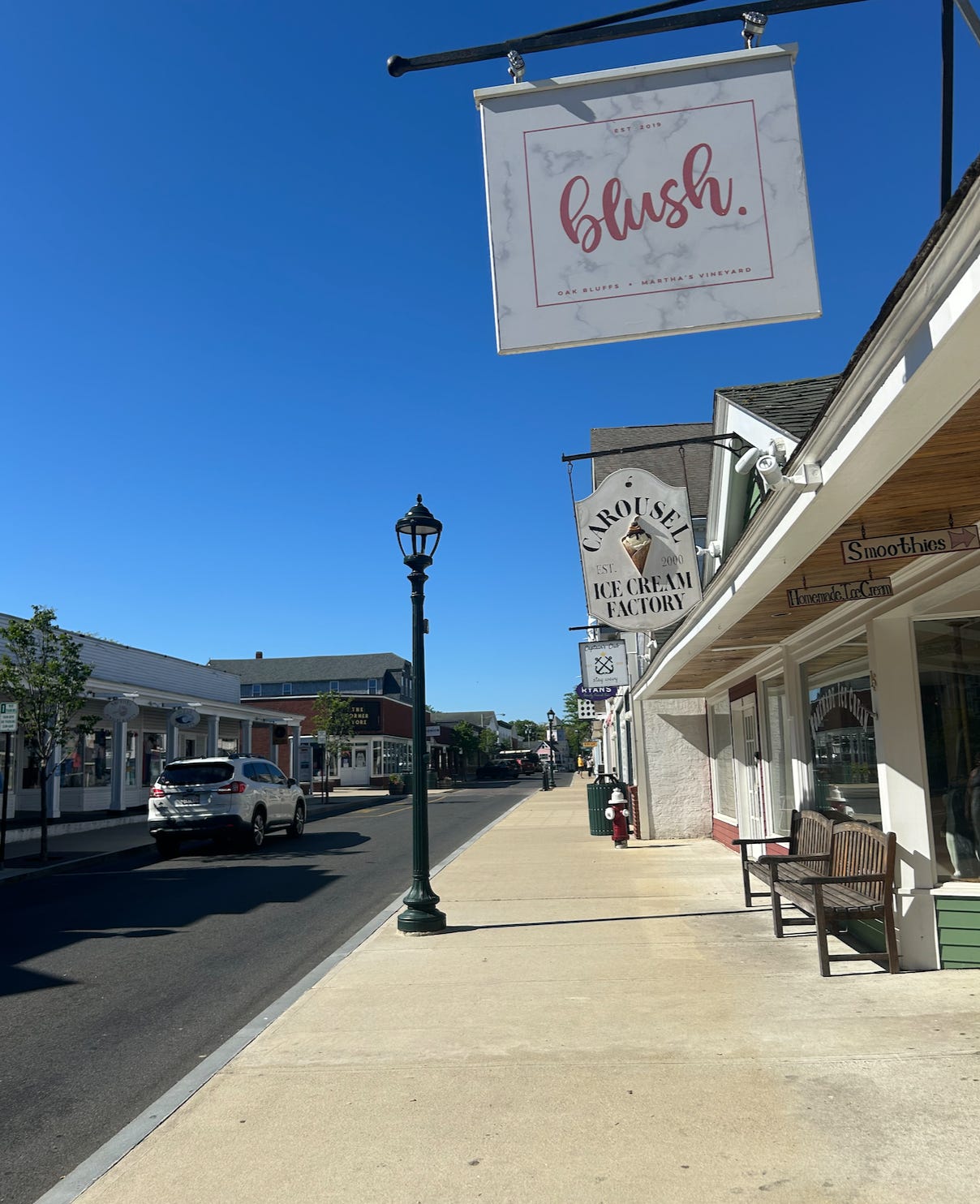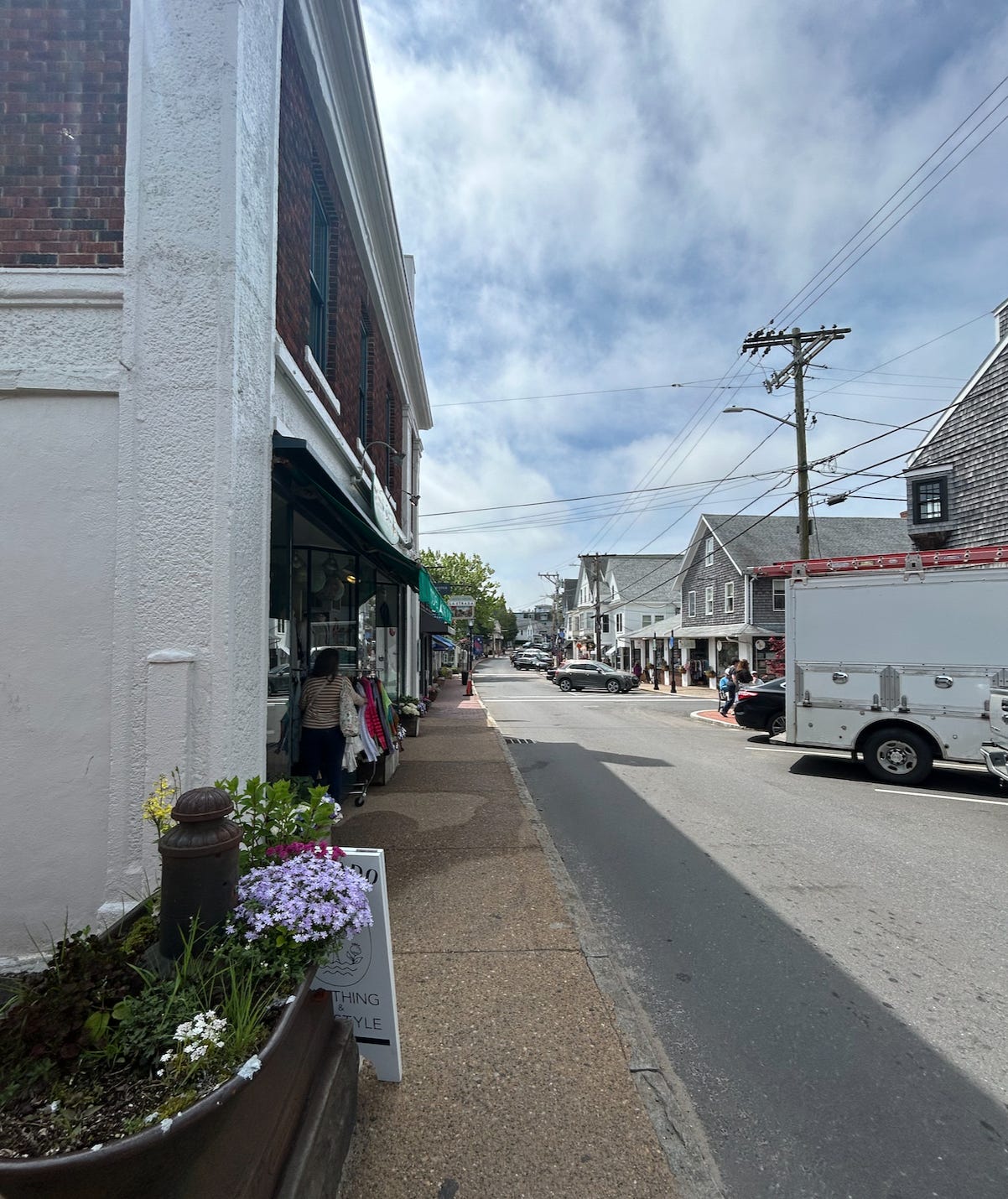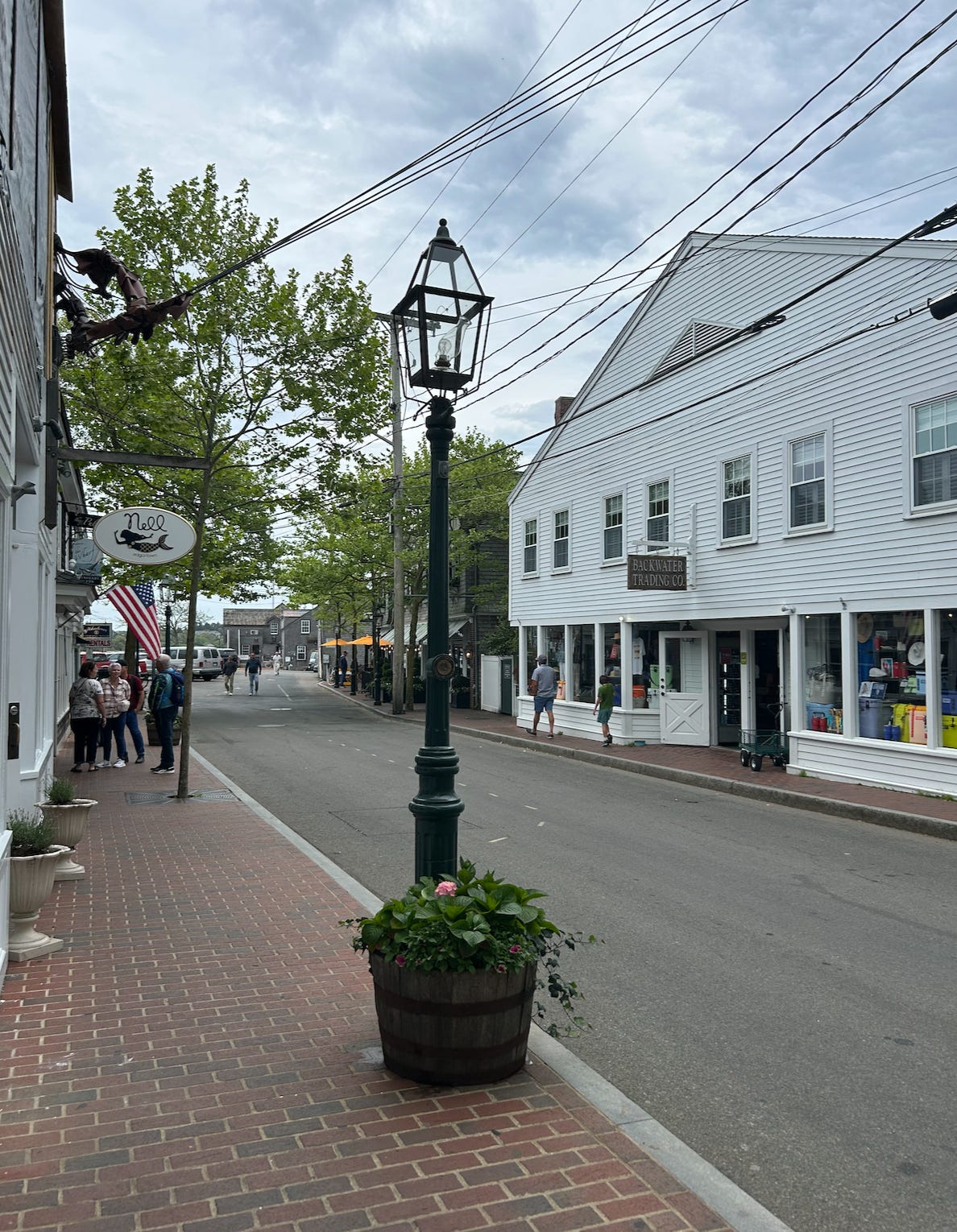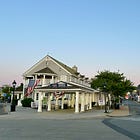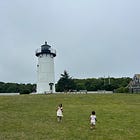♿ Accessibility on Martha’s Vineyard: A Comprehensive Guide (2025)
Explore Comfortably: Getting Here, Getting Around, Town Highlights and Inclusive Attractions
A part of MVacay’s mission is to be as inclusive as possible. After looking through the accessibility resources available to visitors, I wanted to make a comprehensive guide to ensure everyone feels welcomed and informed about their time on MV. We’ll call out specific tips for different needs (wheelchair access, stroller friendliness, etc.) rather than lumping everyone together, to give you a clear picture of how all folks can enjoy the Island.
The Vineyard is continually improving to meet diverse needs, so stay tuned as each year we see further initiatives added!
It’s a long guide, so here’s the TL;DR:
Oak Bluffs is the most accessible town, with smooth sidewalks, beach mats, and an accessible pier.
Use VTA buses – they’re fully accessible, and The Lift offers door-to-door service.
Beaches require planning – check for mats, ask about beach wheelchairs, and confirm access points in advance.
Accessible attractions include the MV Museum, MVCMA, and Land Bank’s Universal Access trails.
Dining & lodging are largely accessible – choose newer buildings or call ahead if you’re unsure.
Sensory needs are increasingly supported – look for calm spaces, spring/fall visits, or events with sensory accommodations.
⛴️Getting to the Island (Ferries vs. Flights)
Most visitors arrive by ferry, and fortunately the major ferries are very accessible. The Steamship Authority operates year-round car ferries with full ADA compliance. Each ferry has elevators between decks and accessible passenger areas. Each Steamship terminal on the mainland also has reserved parking for disabled permit holders for easier drop-off and boarding.
Other seasonal passenger ferries, like the Island Queen or Hy-Line, are generally wheelchair-accessible on their main decks, though they are smaller boats. However, note: these ferries run only in peak season and don’t carry cars. If you use an adaptive van or need to pack medical equipment, taking your car on the Steamship can be a game-changer. For families, the big ferries have restrooms (including accessible ones) and snack bars on board.
The island has a small airport with regional flights, but planes are usually small commuter aircraft with no jetways – boarding often involves stairs or walking on the tarmac. Airlines can provide assistance, but for power wheelchair users or those needing a lift, the ferry is usually a smoother option.
🚌Getting Around the Island
Accessible Buses (VTA): The Vineyard Transit Authority (VTA) runs buses across all towns, and they are fully accessibility-equipped. All buses have ramp or lift boarding, securement areas for wheelchairs and strollers, and priority seating. They also feature audio stop announcements and electronic signage. In summer, buses run frequently; in off-season, service is reduced. The VTA also operates The Lift, a paratransit van for ADA-eligible riders needing door-to-door transport.
Car Travel & Parking: If you brought a car or rent one, all towns have disabled parking spots. Summer parking can be tight, but there are accessible municipal lots and spots reserved for placard holders.
Tours and Taxis: A few tour companies offer ADA-compliant 17-passenger van for private, customizable tours. On-demand accessible taxis are limited, so advance booking is recommended. Rideshare options are inconsistent.
Biking & Walking Paths: Many paved bike paths are flat and wide, suitable for wheelchairs, scooters, and strollers. The Oak Bluffs to Edgartown path, the State Forest loop, and Katama trails are great options. Universal Access Trails, like those at Caleb’s Pond and Blackwater Pond, offer gentle terrain and resting areas.
Bikes for All: Many shops rent e-bikes and adult tricycles for those with limited stamina. Adaptive handcycles are not widely available, so call ahead if needed. You can also load bikes onto VTA buses for a one-way trip flexibility.
📍Town-by-Town Accessibility Highlights
🎠Oak Bluffs (OB): Most Wheelchair-Friendly Town Center
Getting Around in Town: Oak Bluffs has invested heavily in accessible sidewalks, curb cuts, and public spaces. Highlights include the accessible North Bluff boardwalk and Ocean Park with benches and level paths.
Attractions & Public Spaces: The Oak Bluffs Fishing Pier has a wide ramp and deck. The gingerbread cottages area is largely accessible with hard-packed paths, and the Tabernacle offers flat entry. The Flying Horses Carousel has an accessible chariot and restrooms.
Beaches & Waterfront: Inkwell and Pay Beach have access mats and beach wheelchairs available upon request. While not yet fully ADA compliant, improvements are ongoing, and signage for accessible entrances is being added.
Dining & Amenities: Most OB restaurants and shops are flat-entry or ramped. Public restrooms near the ferry and park are ADA-compliant.
Sensory Notes & Family Perks: For sensory-sensitive travelers, OB can be busy in summer; visit in the morning or use Ocean Park as a calm space.
⚓Vineyard Haven (Tisbury): Improving Streets & Cultural Access
Getting Around in Town: Vineyard Haven’s Main Street was recently renovated with smoother sidewalks, curb ramps, and pedestrian plazas with benches. A small park near the ferry terminal includes a harbor-view boardwalk.
Attractions & Public Spaces: The Martha’s Vineyard Museum is fully accessible, with elevators, loaner wheelchairs, and accessible bathrooms. The Vineyard Playhouse has a ramp and designated wheelchair seating.
Beaches & Waterfront: Owen Park Beach is a great option.
Dining & Amenities: Most shops have level or low-threshold entrances. The Black Dog Tavern is accessible and accommodating.
Sensory Notes & Family Perks: The town is quieter in the evenings, which is good for sensory-sensitive guests.
🌊Edgartown: Historic Charm with (Mostly) Flat Terrain
Getting Around in Town: Edgartown’s downtown has wide, fairly level sidewalks and fewer cobblestones. Curb cuts are common, and parking is available (though limited).
Attractions & Public Spaces: The Old Whaling Church has an accessible entrance. Memorial Wharf was rebuilt with an accessible deck and ramp. The Edgartown Lighthouse has a firm trail to the base but isn’t fully accessible beyond that.
Beaches & Waterfront: State Beach is very accessible, with boardwalks and gentle surf. South Beach has an overlook platform but is harder to access with a wheelchair.
Dining & Amenities: Many restaurants have step-free entrances.
Sensory Notes & Family Perks: Edgartown has a public playground and the Felix Neck Wildlife Sanctuary with quiet trails and hands-on programs.
🌲Up-Island (West Tisbury, Chilmark, Aquinnah): Scenic Accessibility
West Tisbury: Polly Hill Arboretum and Alley’s General Store are accessible. The Agricultural Fair offers disabled parking and flat terrain. The farmers’ market is held on mostly flat grass with an accessible port-a-potty.
Chilmark & Menemsha: Hilly and rustic. Menemsha has handicap parking by the harbor and a seasonal beach wheelchair.
Aquinnah (Gay Head): Paved paths at Aquinnah Circle lead to overlooks and the lighthouse base. Shops and restrooms are accessible. The beach path is not accessible, but Moshup Beach has a ramp to a viewing area.
Nature Trails: Great Rock Bight and Gay Head Moraine offer accessible trails for up to 1,000 feet.
❄️Accessibility by Season: Summer vs. Off-Season
Summer: Everything is open and staffed. Ferries and buses run frequently, and beach amenities like mats and chairs are in place. But crowds and traffic can create challenges. Plan ahead and use shuttles to avoid congested areas.
Off-Season: Much quieter, with easier parking and calm streets. Great for sensory-sensitive travelers. Some services (like The Lift) require advance notice, and some infrastructure may be temporarily closed. Beach mats and chairs are typically removed in late September, so plan accordingly. Snow and ice can affect sidewalk accessibility briefly after storms.
🔗Useful Accessibility Resources
Below is a list of reliable resources and links for accessible travel on Martha’s Vineyard. These include official transit and ferry information, specialized guides, and first-hand accounts:
Steamship Authority – Accessibility Information: Official guidance on ferry travel for passengers with disabilities..
Vineyard Transit Authority (VTA) – Bus & Paratransit Accessibility: Information on Martha’s Vineyard’s public transit accessibility.
Beach Within Reach Accessible Beaches Guide (Healthy Aging MV): Comprehensive 2025 guide reviewing accessibility at Martha’s Vineyard’s public beaches.
Martha’s Vineyard Land Bank – Universal Access Trails: Directory of trails and conservation areas with accessible features.
WheelchairTraveling.com – Martha’s Vineyard Accessibility Guide: A first-hand travel report by a wheelchair user, full of practical tips.
Martha’s Vineyard Accessible Travel FAQs (VineyardSquare Hotel Blog): Informative Q&A-style article on island accessibility.
Trails MV (Mobile App) Shares accessibility features of each trail.
Camp Jabberwocky (Non-Profit and Camp) oldest sleep away camp for people with disabilities in America with a wealth of accessible resources.
Martha’s Vineyard is becoming an island for everyone. With some planning and awareness of seasonal differences, it’s a welcoming destination year-round for visitors with accessibility needs.





